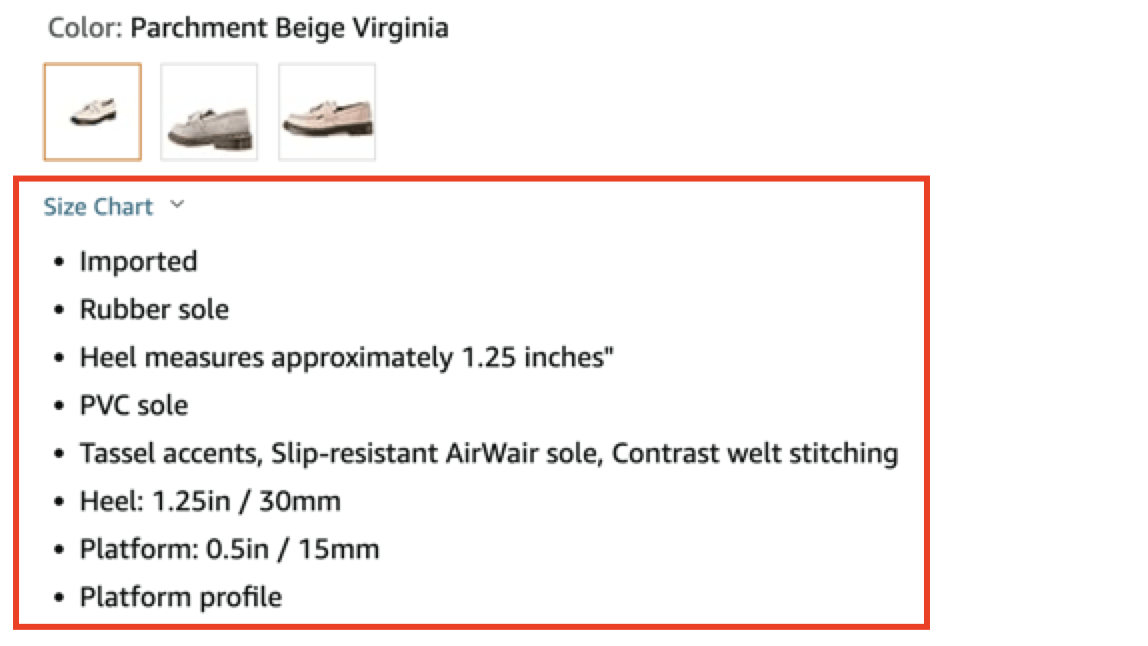When you think of search engine optimization (SEO), your brain likely goes to Google, Bing, or other search engines. However, SEO can apply to other sites, including Amazon.
If you want to have any success on Amazon, you need to understand that with Amazon SEO strategy, you can make sure your listings have the best chance at ranking. This page will break down how to do Amazon SEO and cover the following:
- What is Amazon SEO?
- Why does Amazon SEO matter?
- 5 steps to optimize your product listings
- Bonus: 3 Amazon SEO tips for listing optimization
Read on to learn more about Amazon SEO and how it works below!
What is Amazon SEO?
Amazon SEO is the process of optimizing listings to help them rank higher in results on Amazon.com. Just like regular SEO that you would apply to search engines, Amazon SEO focuses on free changes that you can make to ensure your listings are accessible to the users and algorithm.
When it comes to selling on Amazon, the biggest things to be aware of are product optimization, price point, and advertising.
Ensuring your listing uses premium A+ copy, high-quality product videos, high-quality images, and optimized content will help drive more conversions. While all of these factors are key to increasing conversion rate, having a competitive price point and advertising your products on and off Amazon is the best way to drive more sales.
Since sales play a big role in how products rank, ensuring you have a solid product listing and advertising strategy helps to ensure visibility and sales, which continues to positively impact organic results.

Why does Amazon SEO matter?
Amazon is the #2 most trusted company in America. They process hundreds of thousands of sales every year, and they help manufacturers and businesses of all sizes earn money from their ecommerce endeavors. That said, Amazon is an incredibly useful tool for earning revenue.
Amazon SEO matters for the following reasons:
- Ranking products: The products that appear higher in Amazon rankings are most likely to get bought. Amazon SEO helps you rank higher by making your products easier to rank in the search results.
- Building trust: Optimized product listings do more than earn you higher results. As you add in the elements, you will appear more credible to shoppers, which reflects well on your business over time.
- Earning revenue: Amazon listing optimization will help you earn more revenue. If you list your products appropriately, rank high in search results, and earn buyers’ trust, you will earn more profit for your business.
The bottom line is that if you want your products to sell, whether as an ecommerce business or hybrid retail store, you need some form of Amazon SEO.
5 steps to optimize your product listings
So, how can you optimize your listings with Amazon SEO? By following Amazon SEO best practices for product pages, of course! Here are five different steps you can take:
- Conduct keyword research
- Create compelling sales copy
- Optimize your images and videos
- Review your title
- Add key features
Learn more below!
1. Conduct keyword research
Keywords are the terms that users type into the search bar when trying to find a product. To help people find your product, you should have a solid list of keywords related to your product when users search.
Imagine that you were a user looking for your product. Enter a search and see what comes up, then look at what other terms the top results use. If you want to find more keywords, you can:
- Look at the Amazon suggested and related categories
- View competing products
- Create a list from the auto-complete words and phrases
You can also use SEO keyword research tools like Soovle or our free keyword generator to help you come up with keywords for Amazon.
2. Create compelling sales copy
Amazon listings are broken down into different categories. At the top of the page will be the key features, which is a bulleted list. However, many people want more information, which is why you can use the description further down the page:

This copy lets you go into more detail about your product and explain the intricacies and benefits in paragraph form. When writing this section, you can include your keywords and give people a better explanation of how to use and enjoy your listing.
Here are some tips for what to include:
- Brand names
- Sizes
- Material
- Intended uses
- Color, quantity, and size
3. Optimize your images and videos
Product images are crucial for capturing your audience’s attention. A good collection of product photos will make all the difference when getting customers to buy.

If you want to use images effectively, follow these guidelines:
- All images should have a white background
- The product should be centered in the photo
- There should be multiple photos capturing different angles
- You can use up to 6 photos and videos
- Show the entire product in the main photo, then zoom on details in supplemental images
4. Review your title
Titles are essential for search, as they explain what your product is with no other descriptions. They should complement your image and explain what the product is in a few words. Your title is also an important ranking factor that Amazon references when pulling relevant results.
For example, say that users search the following term:

You can see how this term is present in the top-ranking organic results:

To make your title effective, follow these best practices:
- Keep the title between 60-80 characters
- Use numerals (2) instead of spelling out numbers (two)
- Do not use all caps
- Begin with the brand name
- Avoid special characters and symbols
- Abbreviate measurements
- Only include information necessary to identify the product
- Avoid any salesy language like “hot item” or “good deal”
5. Add key features
Finally, you should optimize your key features to help you rank. The key features are a list of up to five bullet points that appear high on the product listing page:

These points are not always indexed by Amazon search, but they will appear in the product listing. Here’s how to optimize them for search:
- Keep bullet points under 1000 characters total (not per bullet)
- Highlight the top facts you want customers to consider
- Add keywords naturally, but focus on communicating
- Write in sentence fragments with no punctuation
Bonus: 3 Amazon SEO tips for listing optimization
On top of everything we mentioned above, here are three tips to help you succeed with your Amazon SEO strategy:
Break down each one below!
1. Focus on the customer
Your copy should be customer-focused instead of targeting search algorithms. They’re the ones who are going to read it, after all.
Make your sentences and copy easy to read and get to the point of the description. Paint a picture of how the product will make your user’s life better and what makes your option different from the thousand other listings on Amazon.
Most of all, avoid using salesy language that pushes the customer to buy. Keep it targeted towards improving their life, and the sales will naturally follow.
2. Work on your pricing
Unfortunately, pricing does play a role in getting people to purchase. If you want to compete with other companies, you should keep your prices within the same range as the top-listed options.
Let’s say that you’re selling wine glasses, and most of them average $15 a glass. If you’re selling yours at $45 a glass, it might be harder to rank, especially if they’re the same weight, size, and material. Look at what other prices are popular and try to match when possible.
3. Don’t repeat keywords
Avoid keyword stuffing and repetition in your copy, which can come off as overly pushy and spammy. Use the keywords in the title, copy, and features, but don’t repeat them repeatedly just to get more instances.
Generate more ecommerce sales
If you want to learn more about optimizing your listings, you can contact us online or read more about how we help with digital marketing for ecommerce companies!
If you’re ready to take your SEO to the next level, check out our free SEO tool! SEO.com can help you uncover more ecommerce SEO opportunities, track your competitors, and more.
SEO Services That Aren’t Cookie Cutter
Get an SEO strategy that’s tailored for your business, industry, and revenue goals.

P.S. If you’re an artist or crafter, you might consider listing your products on Etsy instead, in which case you might check out our tips for Etsy SEO.

SEO Services That Aren’t Cookie Cutter
Get an SEO strategy that’s tailored for your business, industry, and revenue goals.
Table of Contents
- What is Amazon SEO?
- Why Does Amazon SEO Matter?
- 5 Steps to Optimize Your Product Listings
- 1. Conduct Keyword Research
- 2. Create Compelling Sales Copy
- 3. Optimize Your Images and Videos
- 4. Review Your Title
- 5. Add Key Features
- Bonus: 3 Tips for Amazon Listing Optimization
- 3. Don’t Repeat Keywords
- Generate More Ecommerce Sales
SEO Services That Aren’t Cookie Cutter
Get an SEO strategy that’s tailored for your business, industry, and revenue goals.
Writers

What to read next
- Jul 11, 2025
- 8 min. read


